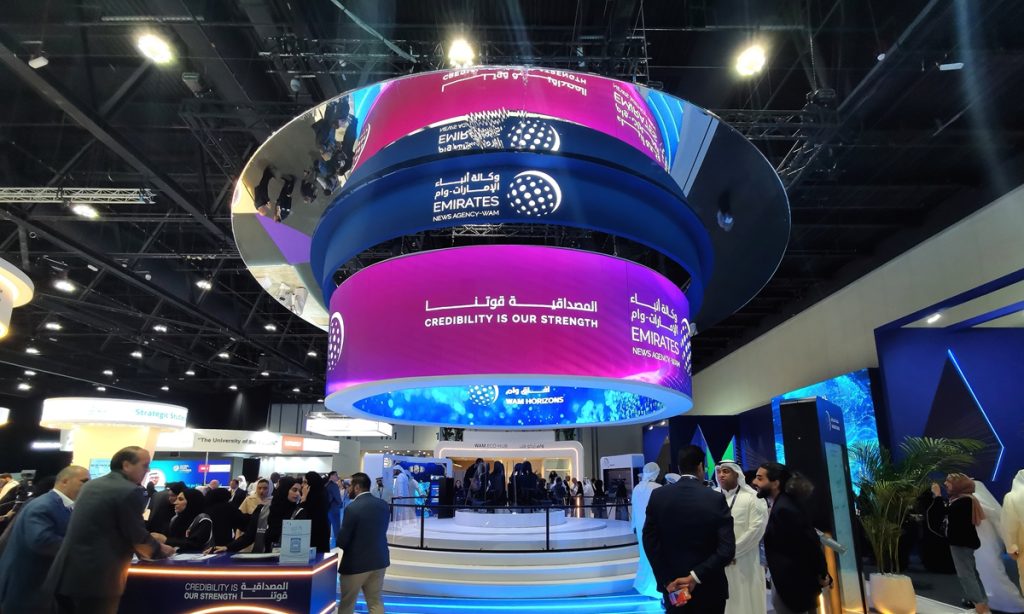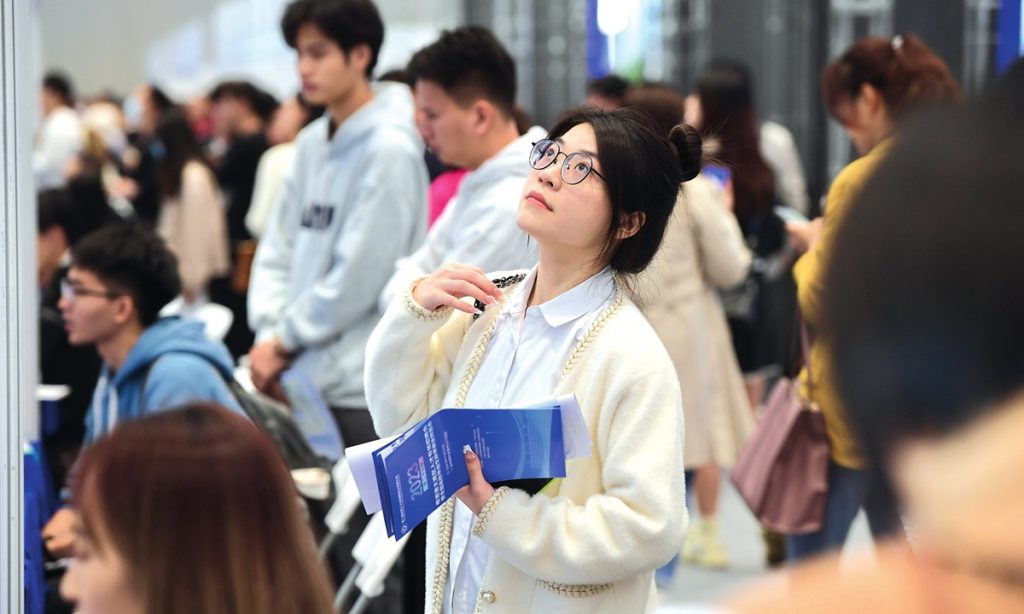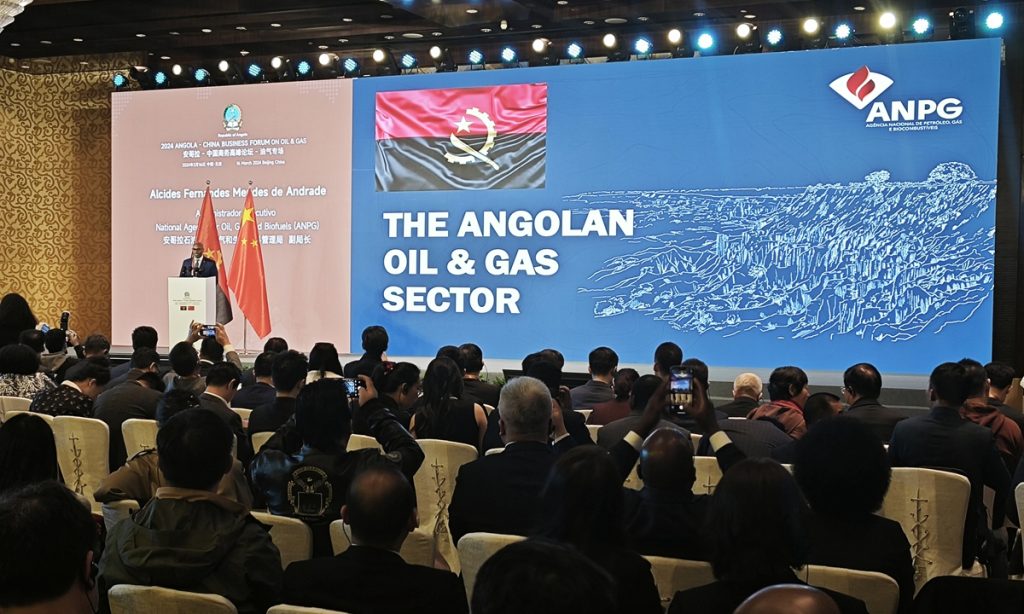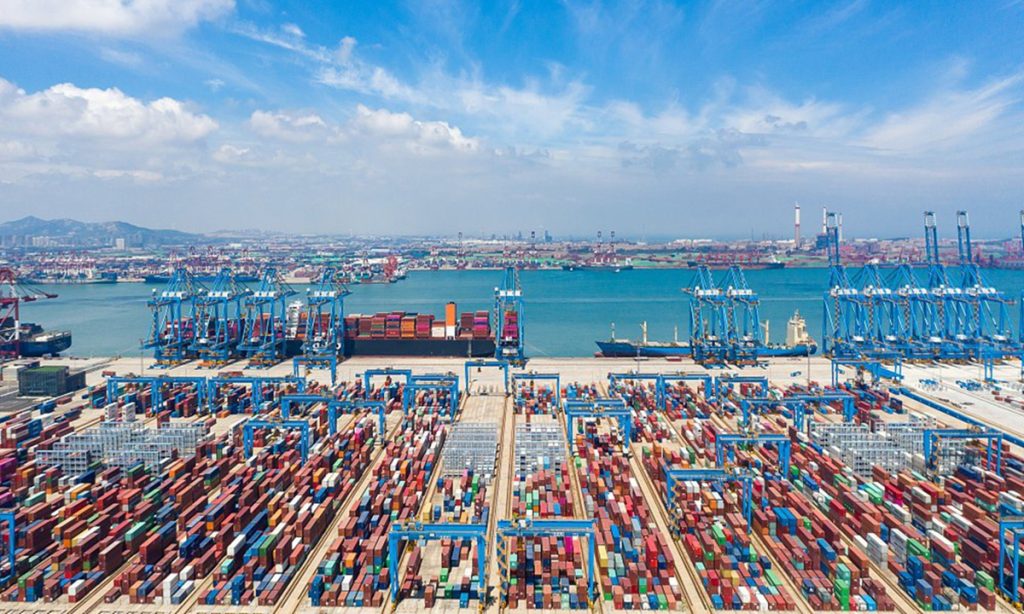Close ties between Russia and China are crucial for global and regional stability: Russian envoy
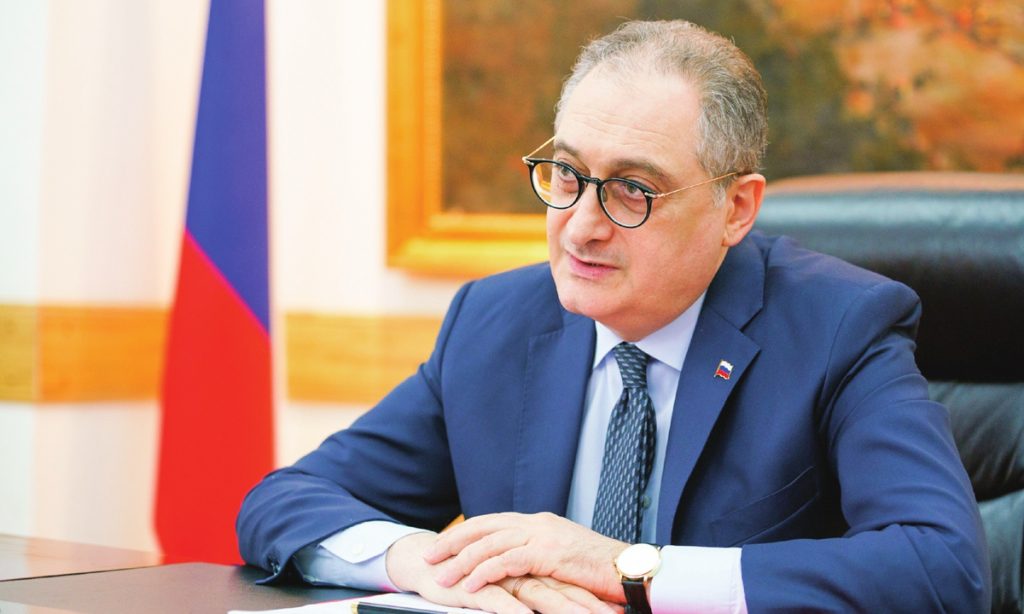
Editor's Note:
The political trust between China and Russia has been steadily strengthened over the years, leading to close strategic coordination and a significant increase in bilateral trade volume. After a year serving as the Russian Ambassador to China, what are the biggest impressions that Igor Morgulov has had during his time in China? In what areas have bilateral relations between China and Russia made significant progress? Global Times reporters Xie Wenting and Bai Yunyi (GT) spoke with the Russian Ambassador to China on these and other topics.
GT: You have been in China for a year now. What has your experience working in China over the last year been? What have your biggest impressions been during your time in China?
Morgulov: China is an amazing country. Time seems to pass by quickly here. In the last year, many important events have taken place, making time fly by.
I was particularly impressed by how quickly China overcame the impact of the COVID-19 pandemic and accelerated the recovery of its national economy. I witnessed the Chinese government implementing decisive and consistent measures to promote the restructuring of the national economic mechanism and propel it toward intensive development.
In terms of the bilateral agenda, the most significant events undoubtedly revolved around the reciprocal visits between the leaders of China and Russia. In March this year, President Xi Jinping paid a state visit to Russia. In October, President Vladimir Putin attended the Third Belt and Road Forum for International Cooperation (BRF III). The two heads of state held meetings. As a result of these contacts, the main paths for further development of the bilateral ties were outlined.
Looking back at cultural exchanges, we cannot ignore the Ninth China-Russia Youth Games held in Chongqing in May under the framework of the China-Russia Sports Exchange Year. Additionally, in June, the world-renowned Mariinsky Theatre Symphony Orchestra, conducted by Valery Gergiev, and the Tchaikovsky Symphony Orchestra, conducted by Vladimir Fedoseyev, performed on a specially-assembled stage at the foot of the Great Wall. This extraordinary performance left a deep impression on those in attendance.
GT: How do you evaluate the current relationship between China and Russia? Over the last year, in which areas do you think China-Russia relations have made significant progress? Has mutual trust between China and Russia been affected by geopolitical and international changes?
Morgulov: The Russia-China comprehensive strategic partnership of coordination for a new era is currently at an unprecedentedly high level and continues to develop. The relationship between the two countries is mature, sustainable, and characterized by a high level of mutual trust, respect, consideration of each other's fundamental interests and mutual support. Both Russia and China are major world powers with strong and continuously growing comprehensive national strength, as well as holding immense potential in the economic and technological fields. Most importantly, I believe, both countries have an abundance of human resources - we have talents in various fields.
The strengthening of the Russia-China partnership has attracted attention from the international community. Sometimes, some ill-intentioned individuals deliberately hype up the Russia-China relationship and fabricate the theory of a threat posed by the growing cooperation between Russia and China.
Any rational person can recognize that the close ties between Russia and China are crucial for global and regional stability. The leaders of both countries have repeatedly emphasized that Russia-China relations are not directed against any third party, and are not a political-military alliance. In many aspects, our cooperation has already surpassed traditional such alliances, enabling both countries to respond to various challenges in a more flexible and efficient manner. The stable and consistent relationship between the two countries allows both sides to continuously promote mutually beneficial cooperation in various fields while strictly safeguarding their own interests, benefiting the people of both countries.
Another cornerstone of cooperation between Russia and China is their similar, and even identical, positions on many international and regional issues. Both countries advocate for a more representative and democratic international order that takes into account the interests of all countries.
This principled stance has received widespread support from the majority of countries around the world, but it has also triggered "allergies" in some Western countries that are unwilling to accept the established fact that their own hegemony is diminishing. It is evident that both Russia and China are ready to engage in pragmatic and mutually beneficial cooperation with any country willing to engage in equal dialogue.
Currently, the geopolitical landscape is undergoing significant changes. Against this backdrop, Russia and China have successfully demonstrated to the world that their partnership remains unbreakable, even in the face of escalating conflicts and confrontations on the international stage. The level of mutual trust between the two countries has been enhanced. Russia and China have confirmed their strategic choice to further deepen cooperation, regardless of any unfavorable external factors they may encounter.
Today, we can confidently say that we have successfully passed the test to the stability of Russia-China relations. In practice, this is reflected in stable bilateral trade with growth rates reaching double digits, a significant increase in the proportion of settlements in local currencies in bilateral trade, and the continuous enhancement of cooperation in various fields, despite extortion by and threats from our opponents. There is no doubt that this positive trend will continue to develop.
GT: Do you believe that China and Russia have created a "new paradigm" for major power relations in the world? What does this mean for the current international order?
Morgulov: I believe that the Russia-China relationship is a model of cooperation between major powers in the 21st century.
Both Russia and China are large countries with unique histories and rich cultural heritages. At the same time, both countries independently decide their own development paths and defend true sovereignty - these are the core values that both countries uphold.
These basic principles apply to various areas of the extensive bilateral cooperation between our two countries. Based on this foundation, the Russia-China comprehensive strategic partnership is continuously being strengthened.
Moscow and Beijing closely coordinate their efforts on the world stage. We adhere to a policy of sovereign diplomacy, defend the purposes and principles of the United Nations Charter, and support the principle of upholding international law. This has resonated with the majority of countries in the international community. We will continue to closely coordinate our diplomatic positions in order to promote the construction of a more just and democratic world order based on the diversity of cultures and civilizations, and the interests of all parties.
GT: In which areas do Russia and China expect to strengthen cooperation in the future?
Morgulov: In terms of pragmatic cooperation, despite the complex geopolitical situation, economic and trade relations between Russia and China continue to show strong momentum. From January to October 2023, bilateral trade volume exceeded $196 billion, a year-on-year increase of 27.7 percent. We have every reason to believe that this year, the bilateral trade volume will surpass the baseline target of $200 billion set by the two heads of state.
As is well known, energy is the "locomotive" of Russia-China economic and trade cooperation. We know that China attaches great importance to energy security and intends to further strengthen cooperation with Russia because our country is a reliable energy supplier.
Russia is a leader in exporting crude oil, coal, natural gas, and liquefied natural gas to the Chinese market. In addition, energy cooperation between the two countries is not limited to raw material trade but also involves the joint implementation of large-scale industrial and infrastructure projects, such as liquefied natural gas production, gas pipeline construction, oil and gas field development and exploration, the peaceful use of nuclear energy and natural gas chemical products. This work is of strategic significance as it lays the foundation for energy cooperation in the coming decades.
At the same time, we have noticed that there is enormous growth potential in the supply of Russian agricultural products to China. We see high demand in China for Russian seafood, meat, grains, and oil plants.
Furthermore, Russia also has vast development opportunities in increasing the exportation of minerals, various metals and metal products, pulp and paper products, and chemical products such as fertilizers to China. On the other hand, China is increasing its exports of computer equipment, mobile phones, and various types of vehicles, including cars, trucks, buses, special vehicles, and their components to Russia. We have noticed that Chinese partners are interested in investing in Russia and cooperating with Russian operators in the automotive and other industrial sectors.
We will continue to make unremitting efforts with our Chinese friends to deepen practical cooperation in various fields. In this context, it is of great significance to carry out systematic work in accordance with the development direction clearly stated in the Joint Statement of the Russian Federation and the People's Republic of China on Deepening the Comprehensive Strategic Partnership of Coordination for the New Era.
GT: We have noticed that some Western media outlets have suggested that Russia is maintaining a "cautious stance" regarding China's collaboration with Central Asian countries under the BRI. How do you view this narrative?
Morgulov: We hold a positive attitude toward the development of equal and mutually beneficial cooperation among all members of the international community, especially China and Central Asian countries that are friendly to Russia. We believe that strengthening cooperation between China and Central Asian countries in various fields is an important factor in maintaining regional stability and stimulating economic growth. The security, stability, and well-being of Central Asian countries are in the interests of both Russia and China. We are willing to enhance mutual coordination and support Central Asian countries in defending their sovereignty and national development. We will never accept external interference in regional affairs or the introduction of "color revolutions."
China's approach to developing cooperation with Central Asian countries is in stark contrast to the policies of the US and its allies. We have noticed that the US and the West are attempting to pressure Central Asian countries using the old methods, which goes against the principle of non-interference in the affairs of sovereign states. The West's attempt to view cooperation with Central Asian countries from the perspective of promoting anti-Russia and anti-China agendas is unacceptable. This completely differs from our approach.
We believe that cooperation between China and Central Asian countries will play an important role in promoting alignment and collaboration between the Eurasian Economic Union and the BRI, and is also in line with President Putin's initiative to establish a "Greater Eurasian Partnership."
GT: Has Russia adjusted its foreign policy focus in the last two years? Some voices suggest that, to counter Western sanctions and diplomatic isolation, Russia is seeking to increase cooperation with Asia-Pacific countries and play a more important role in the Asia-Pacific region, such as conducting joint exercises with many Asia-Pacific countries. Do you agree with this viewpoint?
Morgulov: Some people believe that due to the deterioration of relations with the West, Russia is turning toward the East. I completely disagree with this view. Russia has always been an integral part of the Asia-Pacific region. When formulating its foreign, economic, and investment policies, Russia has always taken into account the significant advantages of this direction.
Over the years, Russia has engaged in extensive cooperation with countries in the Asia-Pacific region. Russia holds an important position in the foreign policies of these countries, many of which are Russia's key strategic partners.
We are strengthening cooperation through existing multilateral mechanisms. The Shanghai Cooperation Organization is a core element of the Asia-Pacific regional architecture. 2024 will mark the fifth year since the establishment of a strategic partnership between Russia and the ASEAN. Russia actively participates in various activities led by the ASEAN. Thanks to these efforts, we have laid the necessary foundation for further development of multi-field cooperation with the Asia-Pacific region and will continue to strengthen multi-level contacts with countries in this region based on this foundation.
